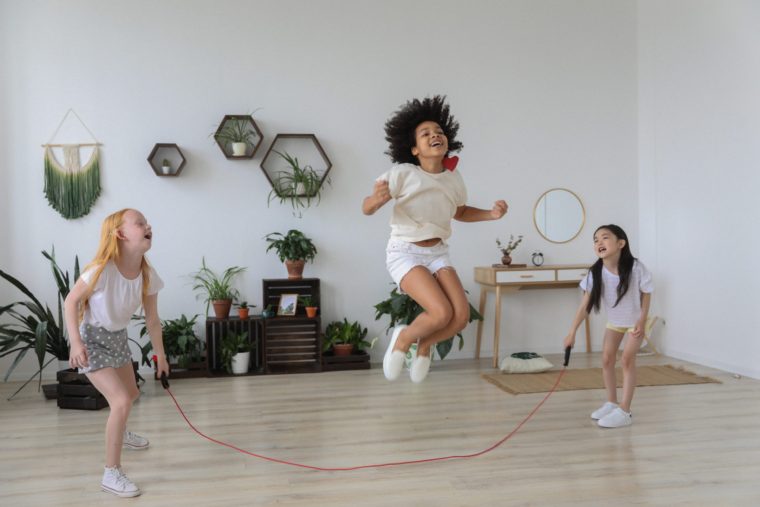Sitting still and studying is the most ineffective way to learn.

In my last article, we looked at movement and how it affects learning.
Today, we’re going to take another look at the effects of movement on learning. This time, as it pertains to memory.
If you recall when you were in school, we were required to memorize many things: times tables, formulas, definitions, and the list goes on and on. Each subject has its own memory tasks. I remember skipping and singing the times tables. I now know that singing anchors information in the brain, and so does movement.
When my daughter was school-age, I got a circular balance board. It was supported by a rubberized half sphere. The flat part was attached to the board and the circular part supported it on the floor.
This gadget required good balance. While I had a difficult time maintaining my equilibrium on it for more than a few seconds, my daughter seemed to do well standing on that thing. This activity turned out to be one of her favorite brain-break endeavors.
When your child moves, there are physical benefits. Her heart rate increases, pumping more blood and thus more oxygen to his organs, tissues, and cells.
More oxygen helps the brain grow and build more nerve networks. Similarly, when there is limited activity, brain cell connections are lost or pruned away…for children as well as adults.
The Brain on Steroids
In addition to the physiological advantage, exercise has been shown to boost verbal memory, and thinking, in addition to learning.
Neuroscientists and educational researchers have told us that certain areas of the brain are responsible for certain functions of the body.
- The cerebellum, a structure found in the back of the skull, is known to be important for the control of movement, while
- The frontal lobe is responsible for cognitive functions such as short-term memory and decision making.
However, as researchers continue to unlock the mystery of how billions of neurons in the brain interact, we are finding out that the frontal cortex is connected to the cerebellum.
Many areas of the brain are involved in complex movement. When your child moves during exercise, that movement triggers the release of brain chemicals (neurotransmitters) that help grow new brain cells and transmit nerve impulses to other nerves, muscle or glands.
These neurotransmitters are responsible for memory, learning and behavior, among other things.
- One neurotransmitter in particular, acetylcholine, is primarily associated with memory, and each of the cerebral lobes affect a particular type of memory
- When movement is paired with semantic (language related) learning, there is more dendritic branching, therefore, a stronger, smoother pathway for recall.
Movement and exercise also reduce stress levels. Stressed, that is, anxious brains don’t learn.
What does that mean for your child?
If you want your child to remember, recall and understand new vocabulary, you must incorporate movement:
- Within 5 hours BEFORE studying? [e.g., take a walk]
- DURING studying? [e.g. Choose a specific word for her to look for in her reading. Then tell her whenever she sees the word, she must do 10 jumping jacks or 5 push-ups.]
- AFTER studying? [Play with koosh balls, walk around the room]
Make a list of your favorite types of exercise. Let your child help. Then mix and match them as he studies.
- Have your child create a chart with a checklist, and put it on the refrigerator
- Before I study, I will…
- While studying, I will…
- After I finish studying, I will…
These are just some examples to prime your imagination. I’m sure you can come up with many other ways.
When you consider the schooling challenges today, where your children have to learn either entirely at home or in a blended model, more and more sitting is involved.
It is your responsibility to get your children moving so their learning can be enhanced.
What is one way you will use to get your child moving while studying?

I will try these tips with my son whom I am Homeschooling as he gets bored easily leading us to take more breaks and a lot of our studies are done outside walking and talking. Especially reading as we take turns reading while walking and looking for things in our books.
That’s a great idea, Glenda. Let him suggest most of the activities and games. Then he will take ownership and his boredom will vanish.
I would think that this applies well to ANY age, although the exercises might need to be modified. 🙂 Thank you.
You are correct, Suzanne. Movement while learning will cement memories for people of all ages.
This is so interesting. I learn new things every time I read your blog.
I’m happy to know that you learn new things from me. My goal is always to share the knowledge God has given me over the years, so someone may benefit.
As a recent dad and though my son is not yet of school age, this is good to know. I may even create a chart with a checklist for certain work related tasks for myself. Thanks for sharing.
I’m always pleased to help, Dre. Happy charting!